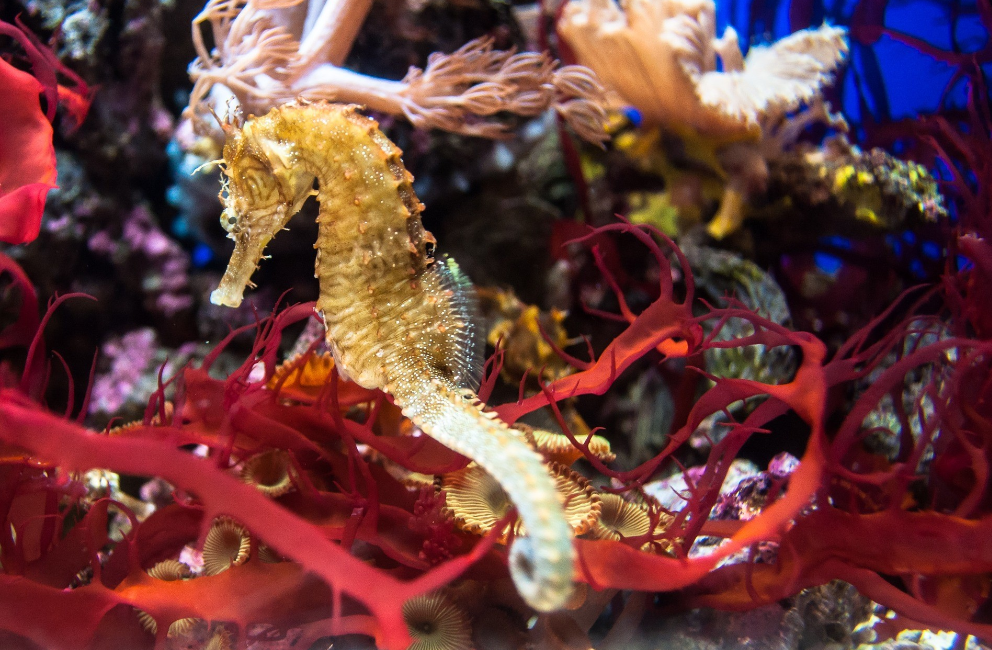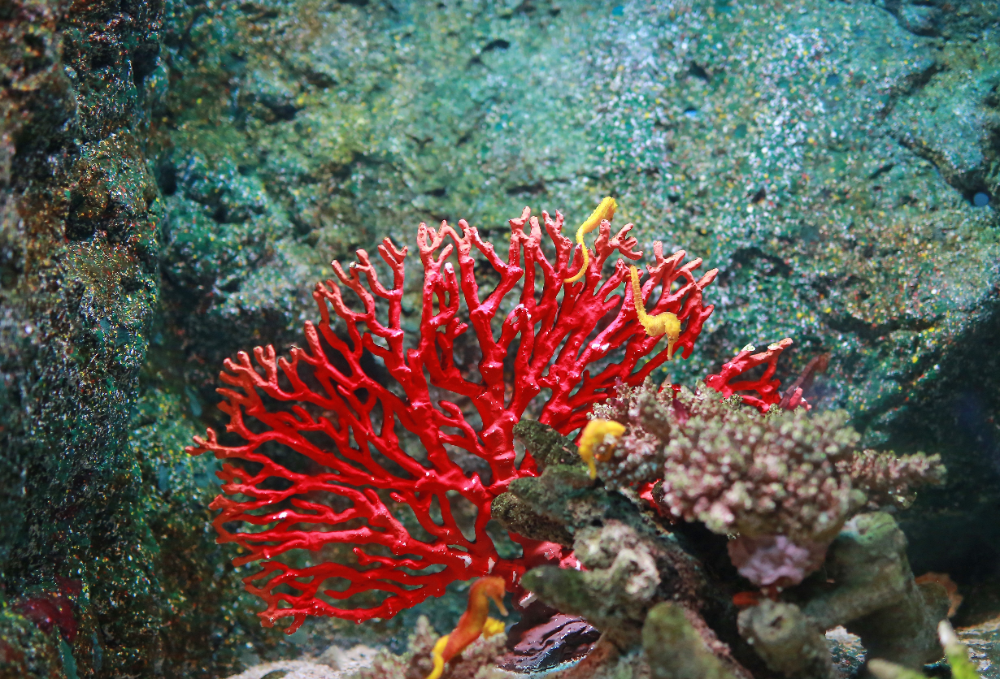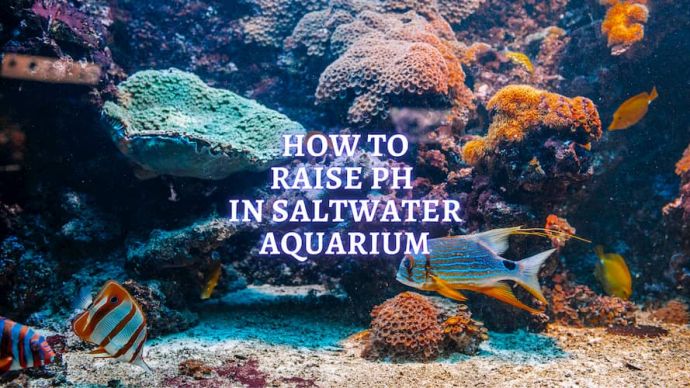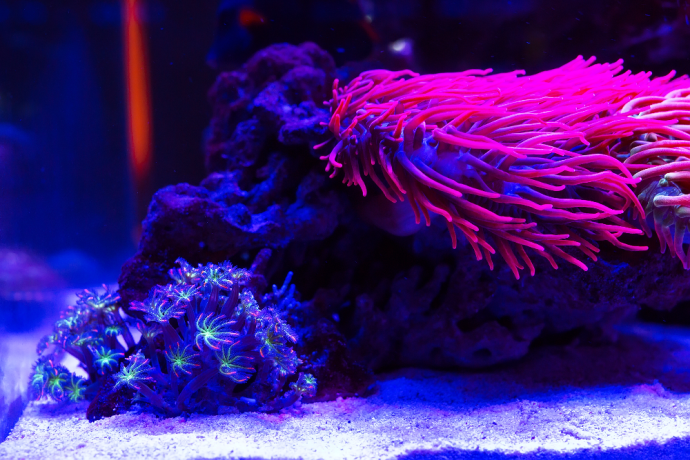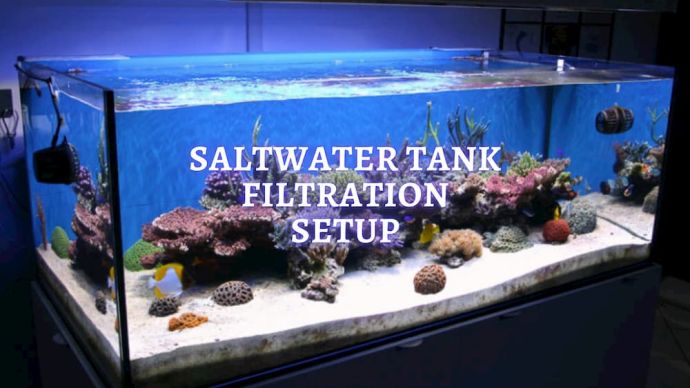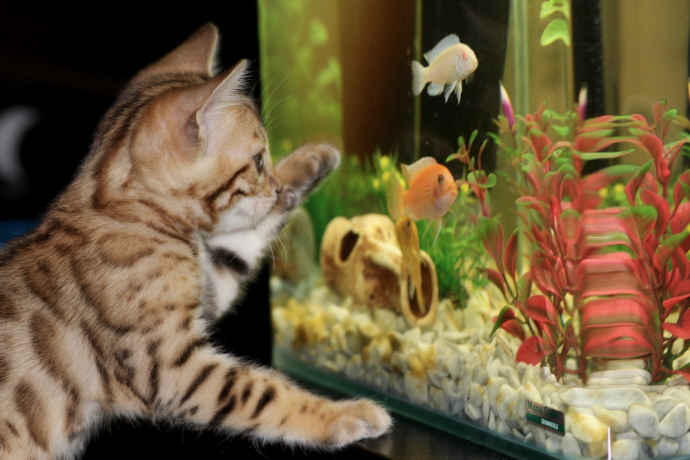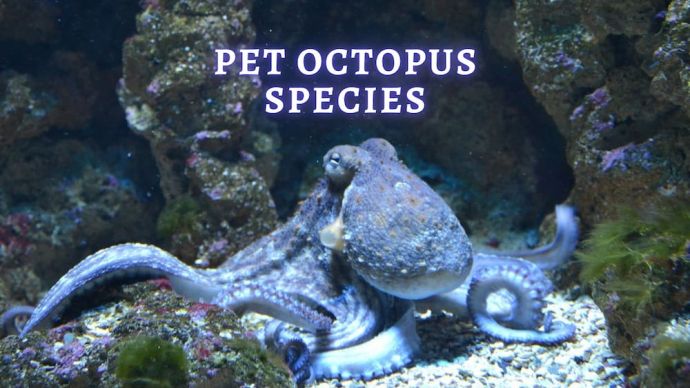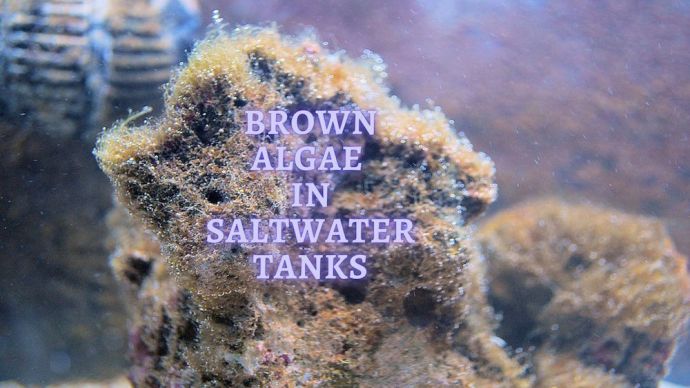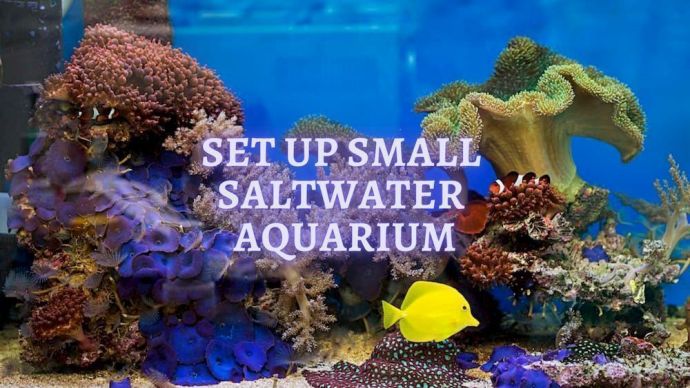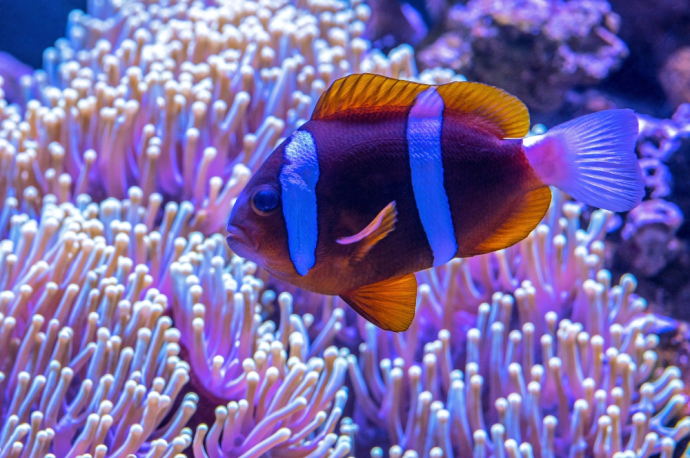How to Care for Seahorses: What You Should Know
Written by:
Author: Vicki Smirnova
Vicki Smirnova is a professional writer and editor who adores animals and helps readers get along well with their pets. She has been working in digital media for more than 5 years and has great experience writing content about lifestyle, including pets. Vicki specializes in dog health and nutrition, cat feeding, dog training. She is an aquarium lover and is passionate to write about fish care at home. Also, Vicki headed several websites and worked as a news editor.
View all 244 articlesLearn about our editorial process and veterinary review board.
Viewed: 790
Updated on: 01/27/2021
Seahorses are incredible creatures which have very individual needs, requiring specialized systems and a good deal of dedication to keep them healthy. These days, coral tanks are quite popular since so many different critters are compatible with them. With that said, though, your seahorses are really deserving of their own dedicated “species tank”.
Breed Overview
| Kingdom: | Animalia |
| Phylum: | Chordata |
| Class: | Actinopterygii |
| Order: | Syngnathiformes |
| Family: | Syngnathidae |
| Subfamily: | Hippocampinae |
| Species: | near 50 |
| Size: | To 14 inches |
| Life expectancy: | 1 to 5 years |
Characteristics
| Social: | Peaceful |
| Minimum Tank Size: | 30 gallon |
| Tank Level: | All levels |
| pH: | 8.1 to 8.4 |
| Hardness: | 8 to 12 dGH |
| Temperature: | 72 to 77 F |
| Breeding: | Livebirth, male pregnancy |
| Diet: | Carnivore |
Can you have a Seahorse as a Pet?
Yes, you can. Although they require unique care, seahorses are easy to keep and even breed, if you maintain the right setup. The key is to invest in the right tank system and pair your seahorses with the right tank mates. From there, it’s really only a matter of feeding them the right food. You’ll soon see just how rewarding seahorses are to care for and how fun they are to observe. But, let’s start by going through some interesting things you should know about seahorses.
Facts About Seahorses
There are no laws against owning seahorses in the United States, but they can be expensive. The average cost is about $100 for 10 dwarf horses, but the price can range drastically depending on if you’re buying a wild-caught or tank-bred seahorse, alongside other factors.
- Scientifically, seahorses (Genus Hippocampus) fall into Family Syngnathidae, sharing this family with sea dragons and pipefishes. In all, there are 36 seahorse species, but all of them share several characteristics that you would distinctly recognize that make them seahorses–like the fact that all seahorses carry themselves upright.
- Seahorses swim using their modified pectoral fins and their dorsal fin. Unlike many other creatures of the sea, they do not have a caudal fin, which you may better recognize as a tail fin. Instead, seahorses have their lovely prehensile tail. If you take a close look at a seahorse, you’ll also notice something that sets them apart from many other sea creatures. Namely, they don’t have scales. Instead, seahorses have bodies that are naturally protected with a series of robust plates.
- The most recognizable feature of seahorse is the distinct shape of their head, which is akin to that of a horse (hence its name). The elegant bend of their neck and slender snout complete the look, helping anyone instantly and intuitively call out a seahorse from all the rest within a tank of any number of creatures.
- As far as wild seahorses go, they are found naturally in many calm glasses of water within estuaries and shallow bays. Most seahorses will prefer a place where macroalgae and seagrass grow densely, which allows them to grab onto something with their tail, keeping them from getting pulled around when waves and tidal currents are strong.
- Like other syngnathids, seahorses are predatory, and they prey on small crustaceans, including amphipods, copepods, and juvenile shrimps. Due to the tiny size of this prey, seahorses are continually hunting and feeding the entire day. Interestingly, while they may have an awkward shape, seahorses are quite adept for hunting. Although slower than many fish, seahorses are impressively nimble and have excellent maneuverability. They’re even able to hover in one place for long periods.
Seahorses are also somewhat unusual in the way that they attack their prey. They use a mechanism known as elastic recoil feeding that lets them rapidly snap their head forward with the energy they store in specific neck muscles. All of this is the behavior you’re sure to witness when you feed your seahorses every day, but first, you’ll need to figure out a few other essential details.
READ MORE: Aquarium Plants Fertilizers
Seahorse Tank Setup
One of the most common questions people ask is: What size tank do seahorses need? In reality, it’s not just the size of the tank, but the important tank setup. Your aquarium for your seahorses won’t be much unlike the saltwater aquarium you would prepare for another fish species.
Below are the specific steps for preparing a dwarf horses aquarium:
- Tank size: Purchase an aquarium that is at least 18 inches high. One dwarf horse needs about 30 gallons of water.
- Installed an aquarium in the shade. Sea horses don’t like bright light. Therefore, it is necessary to adjust the lighting if you plan to combine ordinary reef fish, corals, and dwarf horses.
- Fill in the substrate. Line the bottom of the aquarium with crushed coral or sand. The substrate should be about 2-2.5 inches high.
- Clean and filter water. Mix salt water for the aquarium with fresh, clean, and dechlorinated tap water with a sea salt mixture.
- Water temperature should be 72 to 77 F all year round. Therefore, in summer, you should take care of cooling, and in winter, you must heat the aquarium. Other parameters: pH 8.1 to 8.4; hardness 8 to 12 dGH; salinity 1.021-1.025.
- Filtration tank. The water in the aquarium should be clean, and with a not very fast current; 10 revolutions of the total volume of water per hour are enough.
- Choose the appropriate decorations. You can plant live plants or use artificial ones.
READ MORE: Best Rated Canister Filter
Inside the tank, remember that seahorses live and act differently than other fish. They don’t need hiding spots, but they do need hitching posts. They are what your seahorses will hold onto with their tails when they go to rest. There should be plenty of room so that all of your seahorses can hitch on when sleeping. Realize that live (stinging) corals aren’t useful hitching posts, but you can use real or artificial plants and seaweeds. For example, seahorses love Marineland bamboo!
You can also make your own hitching posts out of the PVC pipe. Although they won’t look natural, the seahorses will not care, and they are actually highly effective within these environments. Alternatively, you can buy larger artificial structures, like Marina mangrove root, so that you can easily clean and handle what’s in the tank without sacrificing the appearance of your tank.
READ MORE: What should the Ammonia level be in a Freshwater Tank
Seahorse Tank Mates
The lifestyle of dwarf horses is measured and slow. They are calm and non-aggressive, so they need neighbors with a similar temperament.
Seahorse Compatible Fish
Fish most suitable for dwarf horses are small, not fast, inactive, cautious, not dangerous, and not competing for food fish. For example, gobies, cardinal, pipefish, dragonets, and firefish.
Gobies
Adults of this type of fish have a large head and large eyes. These fish can live in brackish conditions. They live in the water column or near the surface.
Cardinal
Cardinal is a small fish from the carp family. This small, cold-water fish must be kept in groups of at least 6-8 individuals.
Members of the pipefish genus have a very elongated, needle-like, narrow body. Needles like to pop out of the water, so the aquarium should be closed with a lid.
Dragonets
Dragonets are small marine fish from the diverse family Callionymidae. Their bodies are elongated and without scales. Dragonets have flat triangular heads with large mouths and eyes; their caudal fins are fan-shaped and pointed.
Firefish
The firefish has an elongated body with a bright red-pink color. Aulonokara red dragon has a peaceful nature, and these fish can be easily kept in a typical aquarium with other non-aggressive representatives.
Also, dwarf horses can be kept with different snails that will clean the aquarium from food residues.
Fish to Avoid
The main factor that allows you to determine a good neighbor is its low activity. Highly active fish will irritate the sea horse, suppress them, and select food — for example, Damsels, Triggers, Tomato Clowns, Anemones, and any aggressive fish.
Also, sea horses can be harmed by anemones, corals with stinging tentacles, and some clam crabs that can pinch the sea horse, giving it a wound.
READ MORE: How to take Care of a Freshwater Fish Tank
Feeding Your Seahorse
Feeding will definitely be the most involved part of caring for your seahorse. Seahorses are picky eaters, to say the least, so never expect them to simply accept the food you prepare for them, be it flakes or pellets. Even whole, frozen foods may be rejected. It all depends on your particular seahorse. When it comes to feeding, tank-bred specimens will be easier to deal with than wild-caught ones, who are quite finicky.
Tips on how to feed Seahorses
- prepare living food, which is generally small crustaceans
- seahorses in the wild graze typically throughout the day rather than eating all at once
- it also needs to think about the feeding schedule
- frequent feedings are a must, and many small meals are better than a few big ones
- while it may seem impractical, you should also cut off the filtration system as you feed
What to feed Sea Horses
Feed sea horses with live common shrimp, frozen Mysis shrimp, brine shrimp, and daphnia. Captive-bred fish will calmly accept frozen Mysis, while sea horses caught in the sea will refuse them and only eat live food.
Feeding schedule
Food is put in tank feeders, the fish swim up and eat at a convenient time. Feed dwarf horses 2 to 3 times daily but do not overfeed.
Types of Seahorses for Aquariums
Sea horses are very peculiar fish with an outstanding appearance and an exciting biology. There are about 50 known species of dwarf horses. The most common of them are the following:
Hippocampus abdominalis
It is one of the largest representatives of this unique fish species. As a rule, this type is found in the waters surrounding the coast of the kangaroo continent of Australia and New Zealand lying nearby.
Yellow sea horse
This sea horse species’ habitat is the coast of Pakistan and India (up to Japan’s southern beaches, Hawaii, and the Society Islands). There is dubious evidence of its presence off the coasts of Madagascar and South Africa.
Hippocampus denise
One of the most exciting representatives of these animals is Hippocampus denise, which belongs to dwarf sea horses. The sea inhabitant does not exceed one and a half centimeters in length and has an amazing mimicry ability.
Hippocampus camelopardis
These individuals are a rare species. This sea horse is caught not only for aquariums and souvenirs but also for alternative medicine production. This type of sea horse is found off the coasts of the African continent, but off the coasts of some countries, especially Tanzania and Mozambique.
Hippocampus coronatus
In 1996, it was found that these sea horses are a unique species whose looks and habits are similar to other representatives of these fish.
Black sea horse
The biological features and structure of these excellent fish are beautiful. This sea horse lives in the Black and Azov Seas. The body of the dwarf horse is covered with a shell, with characteristic branched skin growths, in the form of a hump and furrows. The tail is coiled, and there is no caudal fin. The head is covered with small bony shields, and it very much resembles the head of a horse.
Hippocampus satomiae
Hippocampus satomiae is an extremely interesting marine life. It is found only in one place on the planet, namely in the waters that wash Sulawesi’s coast.
Hippocampus erectus
Hippocampus erectus is a fairly rare species, although its habitat is quite extensive. This type of sea horse is found along the Atlantic Coast of the United States and the Gulf of Mexico.
Hippocampus ingens
Hippocampus ingens somewhat resembles Hippocampus reidi in appearance, as it also has a rather long snout, elongated body, and long tail. However, despite the striking external similarity, these sea horses are a different species, since their similarity is limited exclusively to external anatomical features.
Phyllopteryx eques
Phyllopteryx eques, according to its biological characteristics and taxonomy, belongs more to the species of sea needles than to sea horses, but scientists often classify it as a representative.
Health
To determine whether your sea horse is healthy, first of all, you should pay attention to its color. If the health is not normal, they lose their yellow color and turn pale. Sea horses are susceptible to most of the diseases that other fish suffer from. The absence of scales increases injuries from bruises, cuts, and skin parasites. It is necessary to have a separate quarantine container for processing newly arrived and sick fish. To maintain health, monitor water quality, and appropriate filtration.
Breeding
The breeding process of dwarf horses is quite complex, even in the wild. For captive breeding, it is necessary to recreate their natural habitat.
Sea horse spawning begins in late summer. The beginning of the fish’s mating season is determined by the lunar cycle and the beginning of low tide. Fish pre-form pairs that differ in their loyalty. Courtship begins with a mating danc that starts with the female moving vertically in the water column, followed by the male. Gradually, the dance becomes more complicated, and the animals begin to make clicking sounds. In this dance, synchronicity is essential; this is the secret of the successful mating of dwarf horses.
In the female, the ovipositor is released, and the male opens the bag where the female lays eggs. In the bag, the eggs are fertilized, and the male bears them. The number of eggs depends on the type of animal, and it ranges from 60 to 1500. The male bears eggs for about 5-6 weeks.
For breeding to be successful, it is recommended to keep only sea horses in the aquarium. Other species of fish can eat the offspring that are hiding in the weeds. You should be wary of crustaceans and shrimp, which also pose a danger to young animals.
FAQ
✔ Are Sea Horses Saltwater or Freshwater?
Sea horses are mostly marine fish that live in saltwater. Some individuals live in freshwater; however, they are actually freshwater pipefish.
✔ How much does a Sea Horse cost as a pet?
Sea horses cost about $100.00 for 10 dwarf horses. They also require a lot of care, which also costs a lot of money.
✔ Can sea horses live with other fish?
Sea horses get along well with measured and slow-moving fish species, such as gobies, cardinal, pipefish, dragonets, and firefish.
✔ How long do pet Sea Horses live?
An ordinary dwarf horses can live for four to five years.
Of course, if you go through the trouble of doing things right, it will be worth it in the end! After all, adequately cared for seahorses can thrive for years in captivity, so enjoy your new pets.









